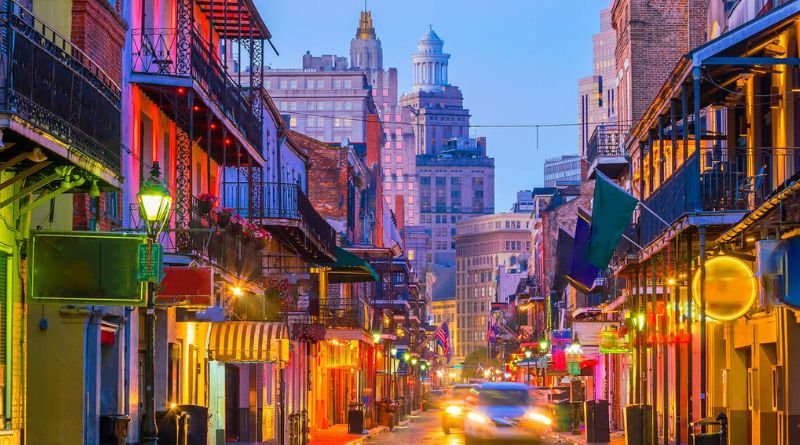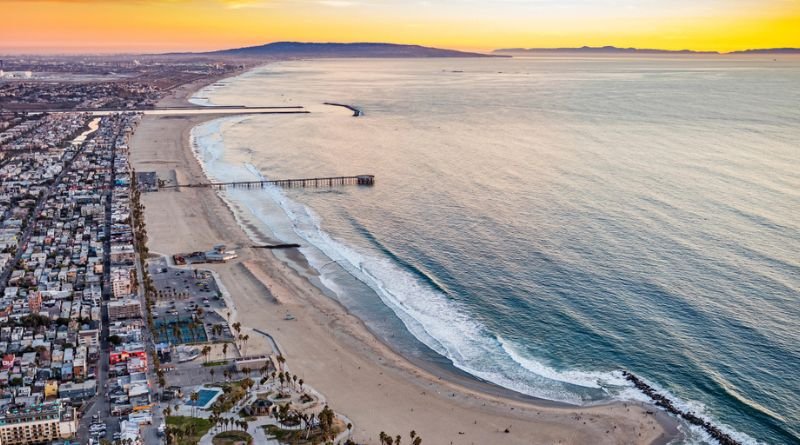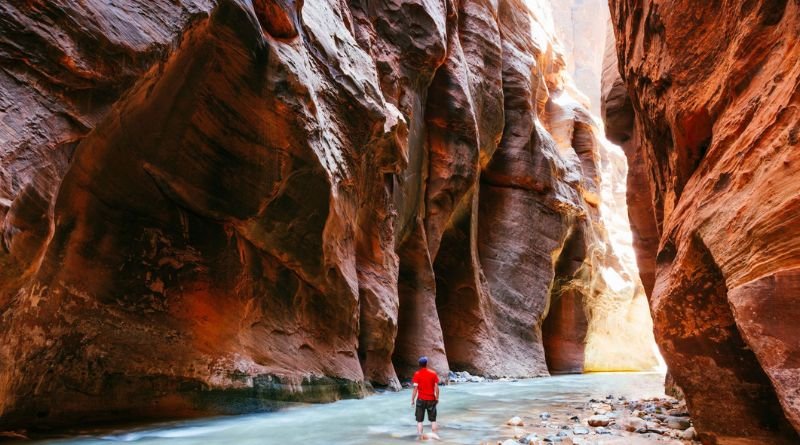The United States boasts some of the most diverse and breathtaking landscapes in the world, making it a haven for hiking enthusiasts. From towering mountain ranges and dense forests to arid deserts and coastal cliffs, the country offers a myriad of trails for adventurers of all levels. This guide explores some of the best hiking trails in the USA, highlighting their unique features, challenges, and the natural beauty that makes each one a must-visit.
The Appalachian Trail
A Journey Through the Eastern United States
The Appalachian Trail (AT) is one of the most famous long-distance hiking trails in the world, stretching approximately 2,200 miles from Springer Mountain in Georgia to Mount Katahdin in Maine. This trail passes through 14 states, offering hikers a chance to experience the diverse ecosystems of the eastern United States.
Highlights and Challenges
The AT is renowned for its challenging terrain, which includes steep climbs, rocky paths, and dense forests. Notable sections include the Great Smoky Mountains, the Blue Ridge Mountains, and the White Mountains of New Hampshire. Each segment offers unique scenic vistas, from the rolling hills of Virginia to the rugged peaks of New Hampshire and Maine.
Hiking the entire AT is a significant undertaking, typically requiring five to seven months to complete. However, many hikers opt for shorter sections, each with its own distinct charm and difficulty level.
Wildlife and Natural Beauty
Hikers on the Appalachian Trail can expect to encounter a wide variety of wildlife, including black bears, deer, and numerous bird species. The trail also passes through several national parks and forests, providing a glimpse of pristine wilderness areas that are teeming with plant and animal life.
The Pacific Crest Trail
From the Mexican Border to Canada
The Pacific Crest Trail (PCT) spans 2,650 miles from the Mexican border in California to the Canadian border in Washington. This trail traverses some of the most scenic and diverse landscapes in the western United States, including deserts, mountains, and forests.
Spectacular Sections
The PCT is divided into several sections, each offering its own unique challenges and breathtaking scenery. The Southern California section features arid desert landscapes, while the Sierra Nevada section includes high-altitude passes and stunning alpine lakes. The Oregon and Washington sections provide lush forests and volcanic peaks, culminating in the dramatic northern terminus at the Canadian border.
Adventure and Preparation
Hiking the PCT is a significant commitment, often taking four to six months for a thru-hike. Proper preparation is essential, as hikers must be ready for extreme weather conditions, including scorching desert heat and freezing mountain temperatures. Water sources can be scarce in the desert sections, requiring careful planning and navigation.
The Continental Divide Trail
The Backbone of America
The Continental Divide Trail (CDT) follows the Continental Divide of the Americas, running approximately 3,100 miles from the Mexican border in New Mexico to the Canadian border in Montana. This trail offers an unparalleled adventure through some of the most remote and rugged wilderness areas in the United States.
Diverse Ecosystems
The CDT passes through five states: New Mexico, Colorado, Wyoming, Idaho, and Montana. Hikers will experience a range of ecosystems, from the desert landscapes of New Mexico to the towering peaks of the Rocky Mountains. Notable highlights include the San Juan Mountains in Colorado, Yellowstone National Park in Wyoming, and Glacier National Park in Montana.
Challenges and Rewards
The CDT is known for its remoteness and challenging terrain, making it one of the most difficult long-distance trails in the country. Thru-hikers often face significant navigation challenges, as the trail is less well-marked than the AT or PCT. However, the rewards are immense, with stunning vistas, solitude, and the opportunity to experience true wilderness.
The John Muir Trail
A Jewel of the Sierra Nevada
The John Muir Trail (JMT) is a 211-mile trail that runs from Yosemite Valley to Mount Whitney, the highest peak in the contiguous United States. Named after the famous naturalist John Muir, this trail offers some of the most spectacular scenery in the Sierra Nevada mountain range.
Iconic Landmarks
The JMT passes through several iconic landmarks, including Yosemite National Park, Kings Canyon National Park, and Sequoia National Park. Hikers will encounter pristine alpine lakes, towering granite peaks, and lush meadows filled with wildflowers. The trail culminates with a challenging ascent of Mount Whitney, providing a breathtaking view from the summit.
Ideal for a Shorter Adventure
While the JMT is significantly shorter than the AT, PCT, or CDT, it offers an intense and rewarding hiking experience. Most hikers complete the trail in about three weeks, making it a perfect option for those seeking a shorter, yet equally spectacular, adventure.
The Zion Narrows
A Unique Slot Canyon Experience
The Zion Narrows, located in Zion National Park, Utah, offers a unique and thrilling hiking experience. This 16-mile trail follows the Virgin River through a narrow slot canyon, with towering walls that rise up to 1,000 feet above the riverbed.
Hiking Through Water
One of the most distinctive features of the Zion Narrows is that much of the hike involves wading or swimming through the river. Hikers must be prepared for wet conditions and potential flash floods, making it essential to check weather conditions and water levels before embarking on the hike.
Stunning Scenery
The narrow canyon walls, combined with the lush greenery and clear river water, create a surreal and enchanting environment. Highlights of the hike include sections such as Wall Street, where the canyon narrows to just 20 feet wide, and the Orderville Canyon junction, which features cascading waterfalls and deep pools.
The Grand Canyon Rim-to-Rim
An Iconic American Adventure
Hiking from one rim of the Grand Canyon to the other is an iconic and challenging adventure that offers unparalleled views of one of the world’s most famous natural wonders. The Rim-to-Rim hike covers approximately 24 miles, descending into the canyon and then climbing back out to the opposite rim.
A Journey Through Geological Time
The Grand Canyon’s layered rock formations provide a visual record of geological history, dating back billions of years. As hikers descend from the North Rim, they pass through distinct ecological zones, from alpine forests to desert landscapes. The trail crosses the Colorado River before the strenuous ascent to the South Rim.
Planning and Preparation
The Rim-to-Rim hike requires careful planning and preparation. Temperatures can vary dramatically between the rims and the canyon floor, and the hike demands significant physical endurance. Many hikers choose to split the journey over two days, camping at the bottom of the canyon to rest and acclimate.
The Kalalau Trail
Tropical Paradise in Hawaii
The Kalalau Trail, located on the island of Kauai, Hawaii, is a 22-mile round-trip hike that offers a stunning tropical adventure. The trail follows the Napali Coast, providing breathtaking views of lush valleys, towering cliffs, and pristine beaches.
Scenic Beauty and Challenges
The Kalalau Trail is renowned for its beauty and challenging terrain. Hikers will navigate steep inclines, narrow ridges, and muddy paths, all while being rewarded with panoramic ocean views and waterfalls. The trail culminates at Kalalau Beach, a secluded and picturesque spot perfect for relaxation and exploration.
Safety Considerations
Hiking the Kalalau Trail requires careful preparation and awareness of potential hazards, including flash floods and slippery conditions. Permits are required for overnight camping, and hikers should be prepared for changing weather conditions and bring sufficient supplies.
The Ice Age Trail
A Glacial Legacy
The Ice Age Trail is a 1,200-mile National Scenic Trail located entirely within the state of Wisconsin. This trail traces the edge of the last glacial advance, providing a unique journey through the state’s geological history.
Diverse Landscapes
The Ice Age Trail features a variety of landscapes, including forests, prairies, and wetlands. Notable sections include the Kettle Moraine State Forest, known for its glacial landforms, and the Devil’s Lake State Park, with its dramatic quartzite bluffs and clear lake waters.
Accessibility and Community
Unlike some of the longer and more remote trails in the USA, the Ice Age Trail is accessible to hikers of all levels. Many sections are easily reached from major cities, and the trail is supported by a strong community of volunteers and local organizations. This makes it an excellent choice for both day hikes and extended backpacking trips.
The Wonderland Trail
Encircling Mount Rainier
The Wonderland Trail is a 93-mile loop trail that encircles Mount Rainier, one of the most iconic peaks in the Pacific Northwest. This trail offers a comprehensive exploration of the diverse ecosystems and stunning scenery of Mount Rainier National Park.
Scenic Highlights
Hikers on the Wonderland Trail will experience a variety of landscapes, including dense forests, alpine meadows, and glacial valleys. The trail provides continuous views of Mount Rainier, with its imposing glaciers and snow-capped summit. Notable sections include the wildflower-filled meadows of Summerland and the dramatic suspension bridges over glacial rivers.
Permits and Planning
Hiking the Wonderland Trail requires careful planning and a permit, which can be competitive to obtain due to the trail’s popularity. Most hikers complete the loop in about 10-14 days, making it a perfect challenge for those seeking a moderately long-distance hike.
Conclusion
The United States is home to some of the most diverse and breathtaking hiking trails in the world. Whether you’re seeking the challenge of a long-distance trek like the Appalachian Trail or the Pacific Crest Trail, the unique beauty of the Zion Narrows, or the tropical paradise of the Kalalau Trail, there is a trail to suit every hiker’s preferences and abilities. These trails not only offer physical challenges and stunning scenery but also provide opportunities for personal growth, adventure, and a deeper connection with nature. So lace up your hiking boots,









